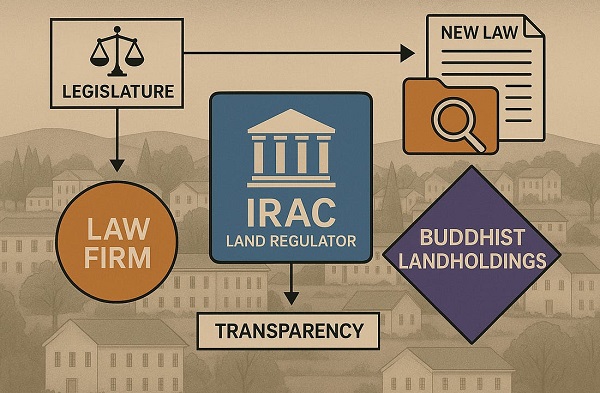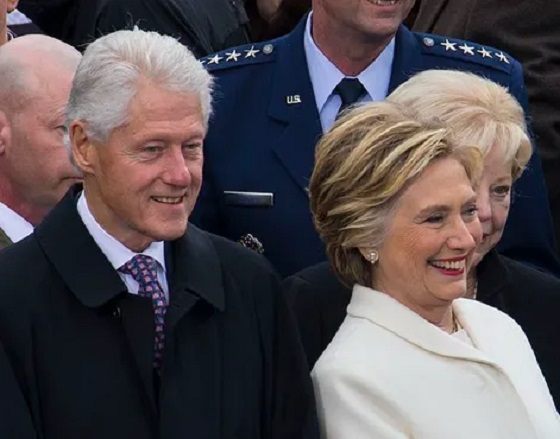Brownstone Institute
Why Did Zuckerberg Choose Now to Confess?

From the Brownstone Institute
By
We had lived through and were living through the most significant far-reaching attacks on our rights and liberties in our lifetimes, or, arguably, on the history record in terms of scale and reach, and it was not part of any serious public debate. Zuckerberg played an enormous role in this.
Consider Mark Zuckerberg’s revelation and its implications for our understanding of the last four years, and what it means for the future.
On many subjects important to public life today, vast numbers of people know the truth, and yet the official channels of information sharing are reluctant to admit it. The Fed admits no fault in inflation and neither do most members of Congress. The food companies don’t admit the harm of the mainstream American diet. The pharmaceutical companies are loath to admit any injury. Media companies deny any bias. So on it goes.
And yet everyone else does know, already and more and more so.
This is why the admission of Facebook’s Mark Zuckerberg was so startling. It’s not what he admitted. We already knew what he revealed. What’s new is that he admitted it. We are simply used to living in a world swimming in lies. It rattles us when a major figure tells us what is true or even partially or slightly true. We almost cannot believe it, and we wonder what the motivation might be.
In his letter to Congressional investigators, he flat-out said what everyone else has been saying for years now.
In 2021, senior officials from the Biden Administration, including the White House, repeatedly pressured our teams for months to censor certain COVID-19 content, including humor and satire, and expressed a lot of frustration with our teams when we didn’t agree….I believe the government pressure was wrong, and I regret that we were not more outspoken about it. I also think we made some choices that, with the benefit of hindsight and new information, we wouldn’t make today. Like I said to our teams at the time, I feel strongly that we should not compromise our content standards due to pressure from any Administration in either direction – and we’re ready to push back if something like this happens again.
A few clarifications. The censorship began much earlier than that, from March 2020 at the very least if not earlier. We all experienced it, almost immediately following lockdowns.
After a few weeks, using that platform to get the word out proved impossible. Facebook once made a mistake and let my piece on Woodstock and the 1969 flu go through but they would never make that mistake again. For the most part, every single opponent of the terrible policies was deplatformed at all levels.
The implications are far more significant than the bloodless letter of Zuckerberg suggests. People consistently underestimate the power that Facebook has over the public mind. This was especially true in the 2020 and 2022 election cycles.
The difference in having an article unthrottled much less amplified by Facebook in these years was in the millionfold. When my article went through, I experienced a level of traffic that I had never seen in my career. It was mind-boggling. When the article was shut down some two weeks later – after focused troll accounts alerted Facebook that the algorithms had made a mistake – traffic fell to the usual trickle.
Again, in my entire career of closely following internet traffic patterns, I had never seen anything like this.
Facebook as an information source offers power like we’ve never seen before, especially because so many people, especially among the voting public, believe that the information they are seeing is from their friends and family and sources they trust. The experience of Facebook and other platforms framed the reality that people believed existed outside of themselves.
Every dissident, and every normal person who had some sense that something odd was going on, was made to feel like some sort of crazy cretin who held nutty and probably dangerous views that were completely out of touch with the mainstream.
What does it mean that Zuckerberg now openly admits that he excluded from view anything that contradicted government wishes? It means that any opinions on lockdowns, masks, or vaccine mandates – and all that is associated with that including church and school closures plus vaccine harms – were not part of the public debate.
We had lived through and were living through the most significant far-reaching attacks on our rights and liberties in our lifetimes, or, arguably, on the history record in terms of scale and reach, and it was not part of any serious public debate. Zuckerberg played an enormous role in this.
People like me had come to believe that average people were simply cowards or stupid not to object. Now we know that this might not have been true at all! The people who objected were simply silenced!
During two election cycles, the Covid response was not really in play as a public controversy. This helps account for why. It also means that any candidate who attempted to make this an issue was automatically downgraded in terms of reach.
How many candidates are we talking about here? Considering all the US elections at the federal, state, and local levels, we are talking about several thousand at least. In every case, the candidate who was speaking out about the most egregious attacks on liberty came to be effectively silenced.
A good example is the Minnesota governor’s race in 2022 that was won by Tim Walz, now running as VP with Kamala Harris. The election pitted Walz against a knowledgeable and highly credentialed medical expert, Dr. Scott Jensen, who made the Covid response a campaign issue. Here is how the vote totals lined up.

Of course, Dr. Jensen could get no traction at all on Facebook, which was enormously influential in this election and which just admitted that it was following government guidelines in censoring posts. In fact, Facebook banned him from advertising completely. It reduced his reach by 90% and likely lost him the election.
You can listen to Jensen’s account here:
Consider how many other elections were affected. It’s astonishing to think of the implications of this. It means that quite possibly an entire generation of elected leaders in this country was not legitimately elected, if by legitimate we mean a well-informed public that is given a choice concerning the issues that affect their lives.
Zuckerberg’s censorship – and this pertains to Google, Instagram, Microsoft’s LinkedIn, and Twitter 1.0 – denied the public a choice on the central matter of lockdowns, masking, and shot mandates, the very issues that have fundamentally roiled the whole of civilization and set the path of history on a dark course.
And it is not just the US. These are all global companies, meaning that elections in every other country, all over the globe, were similarly affected. It was a global shutdown of all opposition to radical, egregious, unworkable, and deeply damaging policies.
When you think about it this way, this is not just some minor error in judgment. This was an earth-shattering decision that goes way beyond managerial cowardice. It goes beyond even election manipulation. It is an outright coup that overthrew an entire generation of leaders who stood up for freedom and replaced them with a generation of leaders who acquiesced to power exactly at the time it mattered the most.
Why did Zuckerberg choose now to make this announcement and publicly reveal the inside play? He was obviously unnerved by the assassination attempt on Trump’s life, as he said.
Then also you have the French arrest of Telegram founder and CEO Pavel Durov, an event which surely rattles any major CEO of a communication platform. You have the arrest and incarceration of other dissidents like Steve Bannon and many others.
You also have the litigation over free speech back in play now that RFK, Jr has been cleared as having standing, kicking the case of Missouri v. Biden back to the Supreme Court, which wrongly decided last time to deny standing to other plaintiffs.
Zuckerberg of all people knows the stakes. He understands the implications and the scale of the problem, as well as the depths of the corruption and deception at play in the US, EU, UK, and all over the world. He may figure that everything is going to come out at some point, so he might as well get ahead of the curve.
Of all the companies in the world that would have a real handle on the state of public opinion right now, it would be Facebook. They see the scale of the support for Trump. And Trump has said on multiple occasions, including in a new book coming out in early September, that he believes Zuckerberg should be prosecuted for his role in manipulating election outcomes. What if, for example, his own internal data is showing 10 to 1 support for Trump over Kamala, completely contradicting the polls which are not credible anyway? That alone could account for his change of heart.
It becomes especially pressing since the person who did the censoring at the Biden White House, Rob Flaherty, now serves as Digital Communications Strategist for the Harris/Walz campaign. There can be no question that the DNC intends to deploy all the same tools, many times over and far more powerful, should they take back the White House.

“Under Rob’s leadership,” said Biden upon Flaherty’s resignation, “we’ve built the largest Office of Digital Strategy in history and, with it, a digital strategy and culture that brought people together instead of dividing them.”
At this point, it’s safe to assume that even the most well-informed outsider knows about 0.5% of the whole of the manipulation, deception, and backroom machinations that have taken place over the past five or so years. Investigators on the case have said that there are hundreds of thousands of pages of evidence that are not classified but have yet to be revealed to the public. Maybe all of this will pour forth starting in the new year.
Therefore, the Zuckerberg admission has much larger implications than anyone has yet admitted. It provides a first official and confirmed peek into the greatest scandal of our times, the global silencing of critics at all levels of society, resulting in manipulating election outcomes, a distorted public culture, the marginalization of dissent, the overriding of all free speech protections, and gaslighting as a way of life of government in our times.
Brownstone Institute
Bizarre Decisions about Nicotine Pouches Lead to the Wrong Products on Shelves

From the Brownstone Institute
A walk through a dozen convenience stores in Montgomery County, Pennsylvania, says a lot about how US nicotine policy actually works. Only about one in eight nicotine-pouch products for sale is legal. The rest are unauthorized—but they’re not all the same. Some are brightly branded, with uncertain ingredients, not approved by any Western regulator, and clearly aimed at impulse buyers. Others—like Sweden’s NOAT—are the opposite: muted, well-made, adult-oriented, and already approved for sale in Europe.
Yet in the United States, NOAT has been told to stop selling. In September 2025, the Food and Drug Administration (FDA) issued the company a warning letter for offering nicotine pouches without marketing authorization. That might make sense if the products were dangerous, but they appear to be among the safest on the market: mild flavors, low nicotine levels, and recyclable paper packaging. In Europe, regulators consider them acceptable. In America, they’re banned. The decision looks, at best, strange—and possibly arbitrary.
What the Market Shows
My October 2025 audit was straightforward. I visited twelve stores and recorded every distinct pouch product visible for sale at the counter. If the item matched one of the twenty ZYN products that the FDA authorized in January, it was counted as legal. Everything else was counted as illegal.
Two of the stores told me they had recently received FDA letters and had already removed most illegal stock. The other ten stores were still dominated by unauthorized products—more than 93 percent of what was on display. Across all twelve locations, about 12 percent of products were legal ZYN, and about 88 percent were not.
The illegal share wasn’t uniform. Many of the unauthorized products were clearly high-nicotine imports with flashy names like Loop, Velo, and Zimo. These products may be fine, but some are probably high in contaminants, and a few often with very high nicotine levels. Others were subdued, plainly meant for adult users. NOAT was a good example of that second group: simple packaging, oat-based filler, restrained flavoring, and branding that makes no effort to look “cool.” It’s the kind of product any regulator serious about harm reduction would welcome.
Enforcement Works
To the FDA’s credit, enforcement does make a difference. The two stores that received official letters quickly pulled their illegal stock. That mirrors the agency’s broader efforts this year: new import alerts to detain unauthorized tobacco products at the border (see also Import Alert 98-06), and hundreds of warning letters to retailers, importers, and distributors.
But effective enforcement can’t solve a supply problem. The list of legal nicotine-pouch products is still extremely short—only a narrow range of ZYN items. Adults who want more variety, or stores that want to meet that demand, inevitably turn to gray-market suppliers. The more limited the legal catalog, the more the illegal market thrives.
Why the NOAT Decision Appears Bizarre
The FDA’s own actions make the situation hard to explain. In January 2025, it authorized twenty ZYN products after finding that they contained far fewer harmful chemicals than cigarettes and could help adult smokers switch. That was progress. But nine months later, the FDA has approved nothing else—while sending a warning letter to NOAT, arguably the least youth-oriented pouch line in the world.
The outcome is bad for legal sellers and public health. ZYN is legal; a handful of clearly risky, high-nicotine imports continue to circulate; and a mild, adult-market brand that meets European safety and labeling rules is banned. Officially, NOAT’s problem is procedural—it lacks a marketing order. But in practical terms, the FDA is punishing the very design choices it claims to value: simplicity, low appeal to minors, and clean ingredients.
This approach also ignores the differences in actual risk. Studies consistently show that nicotine pouches have far fewer toxins than cigarettes and far less variability than many vapes. The biggest pouch concerns are uneven nicotine levels and occasional traces of tobacco-specific nitrosamines, depending on manufacturing quality. The serious contamination issues—heavy metals and inconsistent dosage—belong mostly to disposable vapes, particularly the flood of unregulated imports from China. Treating all “unauthorized” products as equally bad blurs those distinctions and undermines proportional enforcement.
A Better Balance: Enforce Upstream, Widen the Legal Path
My small Montgomery County survey suggests a simple formula for improvement.
First, keep enforcement targeted and focused on suppliers, not just clerks. Warning letters clearly change behavior at the store level, but the biggest impact will come from auditing distributors and importers, and stopping bad shipments before they reach retail shelves.
Second, make compliance easy. A single-page list of authorized nicotine-pouch products—currently the twenty approved ZYN items—should be posted in every store and attached to distributor invoices. Point-of-sale systems can block barcodes for anything not on the list, and retailers could affirm, once a year, that they stock only approved items.
Third, widen the legal lane. The FDA launched a pilot program in September 2025 to speed review of new pouch applications. That program should spell out exactly what evidence is needed—chemical data, toxicology, nicotine release rates, and behavioral studies—and make timely decisions. If products like NOAT meet those standards, they should be authorized quickly. Legal competition among adult-oriented brands will crowd out the sketchy imports far faster than enforcement alone.
The Bottom Line
Enforcement matters, and the data show it works—where it happens. But the legal market is too narrow to protect consumers or encourage innovation. The current regime leaves a few ZYN products as lonely legal islands in a sea of gray-market pouches that range from sensible to reckless.
The FDA’s treatment of NOAT stands out as a case study in inconsistency: a quiet, adult-focused brand approved in Europe yet effectively banned in the US, while flashier and riskier options continue to slip through. That’s not a public-health victory; it’s a missed opportunity.
If the goal is to help adult smokers move to lower-risk products while keeping youth use low, the path forward is clear: enforce smartly, make compliance easy, and give good products a fair shot. Right now, we’re doing the first part well—but failing at the second and third. It’s time to fix that.
Addictions
The War on Commonsense Nicotine Regulation

From the Brownstone Institute
Cigarettes kill nearly half a million Americans each year. Everyone knows it, including the Food and Drug Administration. Yet while the most lethal nicotine product remains on sale in every gas station, the FDA continues to block or delay far safer alternatives.
Nicotine pouches—small, smokeless packets tucked under the lip—deliver nicotine without burning tobacco. They eliminate the tar, carbon monoxide, and carcinogens that make cigarettes so deadly. The logic of harm reduction couldn’t be clearer: if smokers can get nicotine without smoke, millions of lives could be saved.
Sweden has already proven the point. Through widespread use of snus and nicotine pouches, the country has cut daily smoking to about 5 percent, the lowest rate in Europe. Lung-cancer deaths are less than half the continental average. This “Swedish Experience” shows that when adults are given safer options, they switch voluntarily—no prohibition required.
In the United States, however, the FDA’s tobacco division has turned this logic on its head. Since Congress gave it sweeping authority in 2009, the agency has demanded that every new product undergo a Premarket Tobacco Product Application, or PMTA, proving it is “appropriate for the protection of public health.” That sounds reasonable until you see how the process works.
Manufacturers must spend millions on speculative modeling about how their products might affect every segment of society—smokers, nonsmokers, youth, and future generations—before they can even reach the market. Unsurprisingly, almost all PMTAs have been denied or shelved. Reduced-risk products sit in limbo while Marlboros and Newports remain untouched.
Only this January did the agency relent slightly, authorizing 20 ZYN nicotine-pouch products made by Swedish Match, now owned by Philip Morris. The FDA admitted the obvious: “The data show that these specific products are appropriate for the protection of public health.” The toxic-chemical levels were far lower than in cigarettes, and adult smokers were more likely to switch than teens were to start.
The decision should have been a turning point. Instead, it exposed the double standard. Other pouch makers—especially smaller firms from Sweden and the US, such as NOAT—remain locked out of the legal market even when their products meet the same technical standards.
The FDA’s inaction has created a black market dominated by unregulated imports, many from China. According to my own research, roughly 85 percent of pouches now sold in convenience stores are technically illegal.
The agency claims that this heavy-handed approach protects kids. But youth pouch use in the US remains very low—about 1.5 percent of high-school students according to the latest National Youth Tobacco Survey—while nearly 30 million American adults still smoke. Denying safer products to millions of addicted adults because a tiny fraction of teens might experiment is the opposite of public-health logic.
There’s a better path. The FDA should base its decisions on science, not fear. If a product dramatically reduces exposure to harmful chemicals, meets strict packaging and marketing standards, and enforces Tobacco 21 age verification, it should be allowed on the market. Population-level effects can be monitored afterward through real-world data on switching and youth use. That’s how drug and vaccine regulation already works.
Sweden’s evidence shows the results of a pragmatic approach: a near-smoke-free society achieved through consumer choice, not coercion. The FDA’s own approval of ZYN proves that such products can meet its legal standard for protecting public health. The next step is consistency—apply the same rules to everyone.
Combustion, not nicotine, is the killer. Until the FDA acts on that simple truth, it will keep protecting the cigarette industry it was supposed to regulate.
-

 Frontier Centre for Public Policy2 days ago
Frontier Centre for Public Policy2 days agoRichmond Mayor Warns Property Owners That The Cowichan Case Puts Their Titles At Risk
-

 COVID-191 day ago
COVID-191 day agoMajor new studies link COVID shots to kidney disease, respiratory problems
-

 Business2 days ago
Business2 days agoSluggish homebuilding will have far-reaching effects on Canada’s economy
-

 Business2 days ago
Business2 days agoMark Carney Seeks to Replace Fiscal Watchdog with Loyal Lapdog
-

 Business2 days ago
Business2 days agoP.E.I. Moves to Open IRAC Files, Forcing Land Regulator to Publish Reports After The Bureau’s Investigation
-

 Energy2 days ago
Energy2 days agoCanada’s oilpatch shows strength amid global oil shakeup
-

 International1 day ago
International1 day agoBondi and Patel deliver explosive “Clinton Corruption Files” to Congress
-

 International1 day ago
International1 day agoIs America drifting toward civil war? Joe Rogan thinks so












